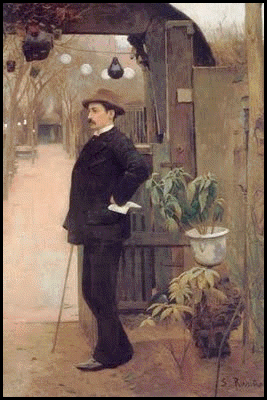My Life as an Object
Kathleen Rooney
(University of Arkansas Press)

- how the body is transformed from a social subject into a medical object during an examination.
You and I take off part or all of our clothes (often with the exception, she notes, of socks) while physicians will add a layer of clothing: a knee-length white coat. She remarks on this discrepancy:
- The archeology of these artifacts is suggestive here: the layering of an outermost and predominant role over a complete social person as opposed to the reduction of a complete social person to a diminished role.
Then,
- Physicians make their initial appearance already in costume for their role, whereas patients change costume in the course of the performance.
In Live Nude Girl, Kathleen Rooney has several similar ideas about the presence or absence of clothes. She reports that as an artist's model she finds that there is a world of difference between "naked" and "nude." Much of this book is an extended exposition on this distinction.
For instance, once when taking off her robe for an artist she says, "I hoped I didn't look as discombobulated as he did in that instant --- unsure, clumsy, fumbling with his brushes --- though I certainly felt that I was."
- I was naked before him, not nude as I preferred, but vulnerable in a way I had not felt since my debut session back at the Corcoran in Washington, D. C.
She tells us that it is only in the first thirty seconds after disrobing that one feels "insecure, adrift."
- I felt worried, inadequate, meager even, comparing myself --- against my rational will --- to his wife...
What is it about clothes (or lack of them) that does this to us? James Elkins, an art historian, says that when one of us is clothed and another naked, the balance of power tends to end up in favor of the person who is dressed. Elkins "goes on to cite examples of situations in which this is the case, including hospitals, the porn industry, and especially prisons --- with their strip-searches and uses of nudity as punishment."
- Naked people are not disempowered because they are naked; rather they are naked because they are disempowered (although I suppose one could debate the disempowerment of porn actors).
For an artist's model, says Rooney, "There is a subtle perversion at work. It defies natural order by putting a nude woman at the artist's disposal, a women which he 'uses,' which he looks at but cannot touch."
- It's partly this perversion --- this combination of my naked vulnerability with the impossibility of my actually being touched --- that makes me love modeling so much.
Ms. Rooney spends much of the book playing out these two roles: she bare-assed on a stage with artists --- professional or amateur --- standing around her, painting or sculpting her, or in a couple of cases, taking photographs.
One of the most dramatic chapters has her sitting --- then lying --- buck-naked, alone, in a loft, with an "art" photographer ... who gradually sets up weirder and weirder poses so that we find ourselves fervently wanting her to get the hell out of there before he does something funny. After a dozen or so pages she finally makes her exit, unruffled, where she meets up with her fiancé. The only detail not touched on in all this is what he, her prospective husband, thought of her giving a couple of hours of her unclothed body to a weird stranger who can afford to pay her $200 for her services.
Live Nude Girl is intriguing, as much for the insights into clothed vs. unclothed as for the occasional throw-aways. For instance, she tells us that Edward Weston, with his stunning photographs of nudes "made some of his subjects look like vegetables."
- He made his sitters look like peppers, or like squash, not to dehumanize them, but to call attention to the splendor of all forms: animal, vegetable, mineral, human.
Or this story from a woman who modeled for Maurice Utrillo.
- She said that after hours on end of her standing there naked, and him standing there drawing, she put on her clothes and took a peek at the canvas. She discovered that all he'd been doing that whole time was this quaint pastoral scene of some little country house.